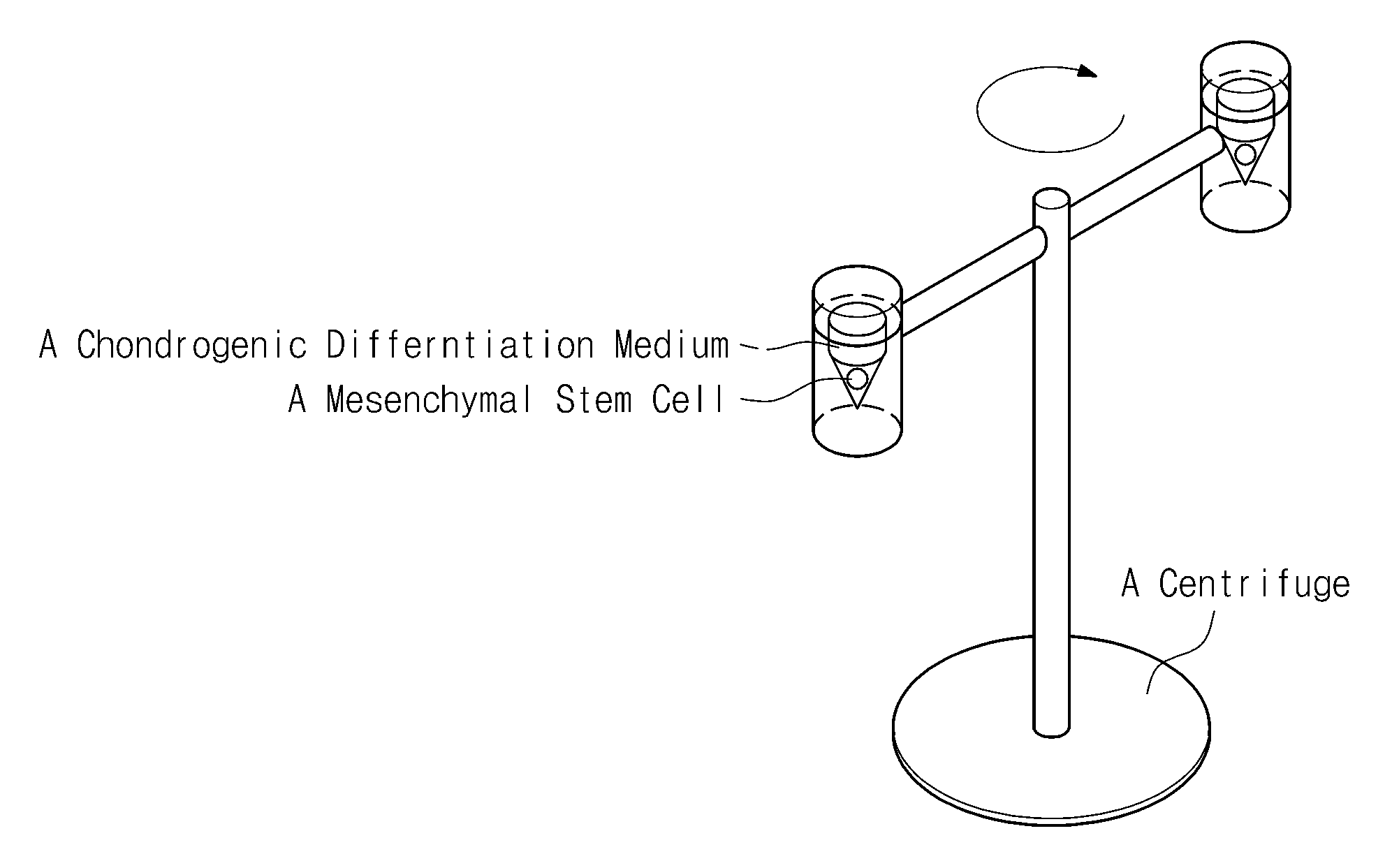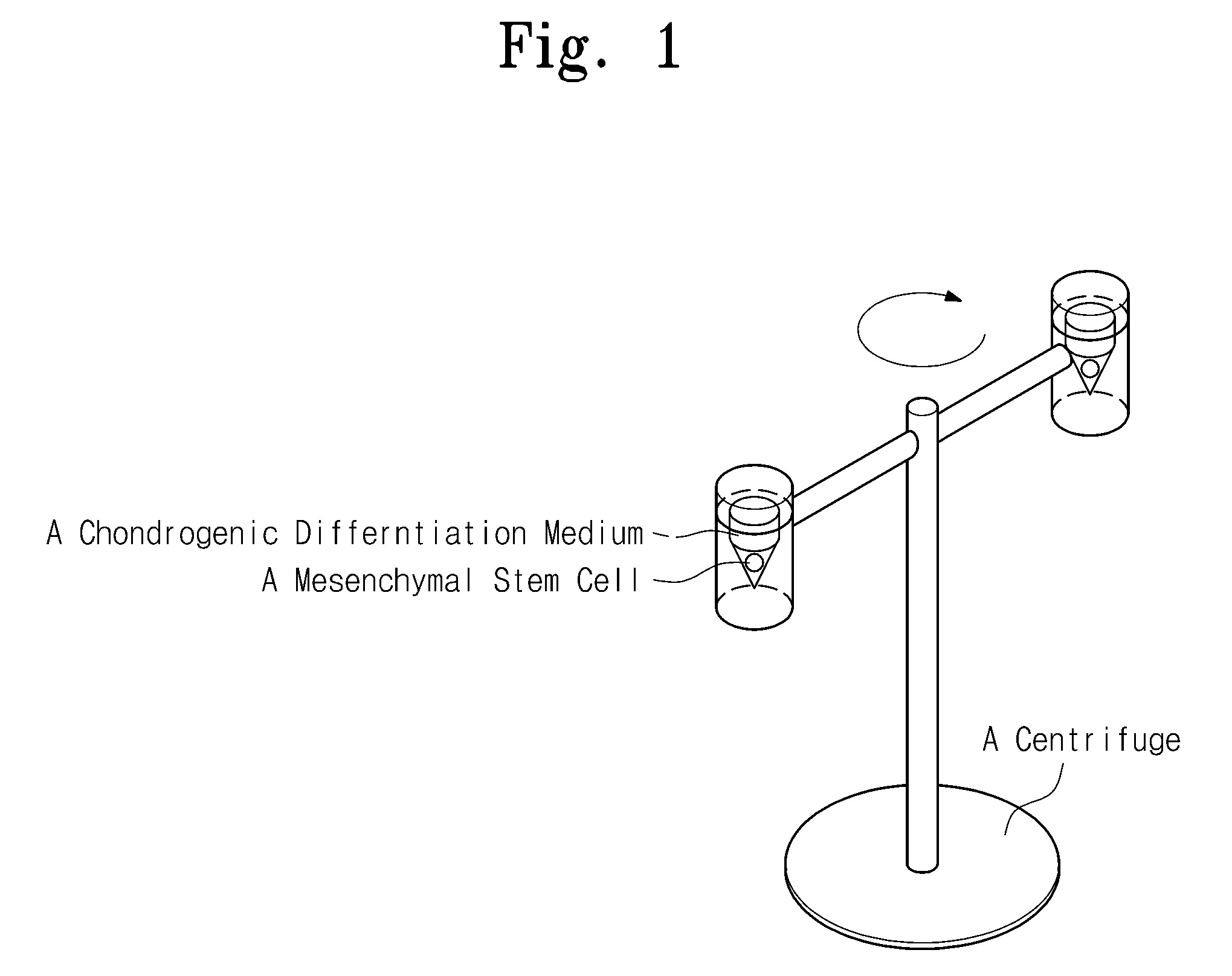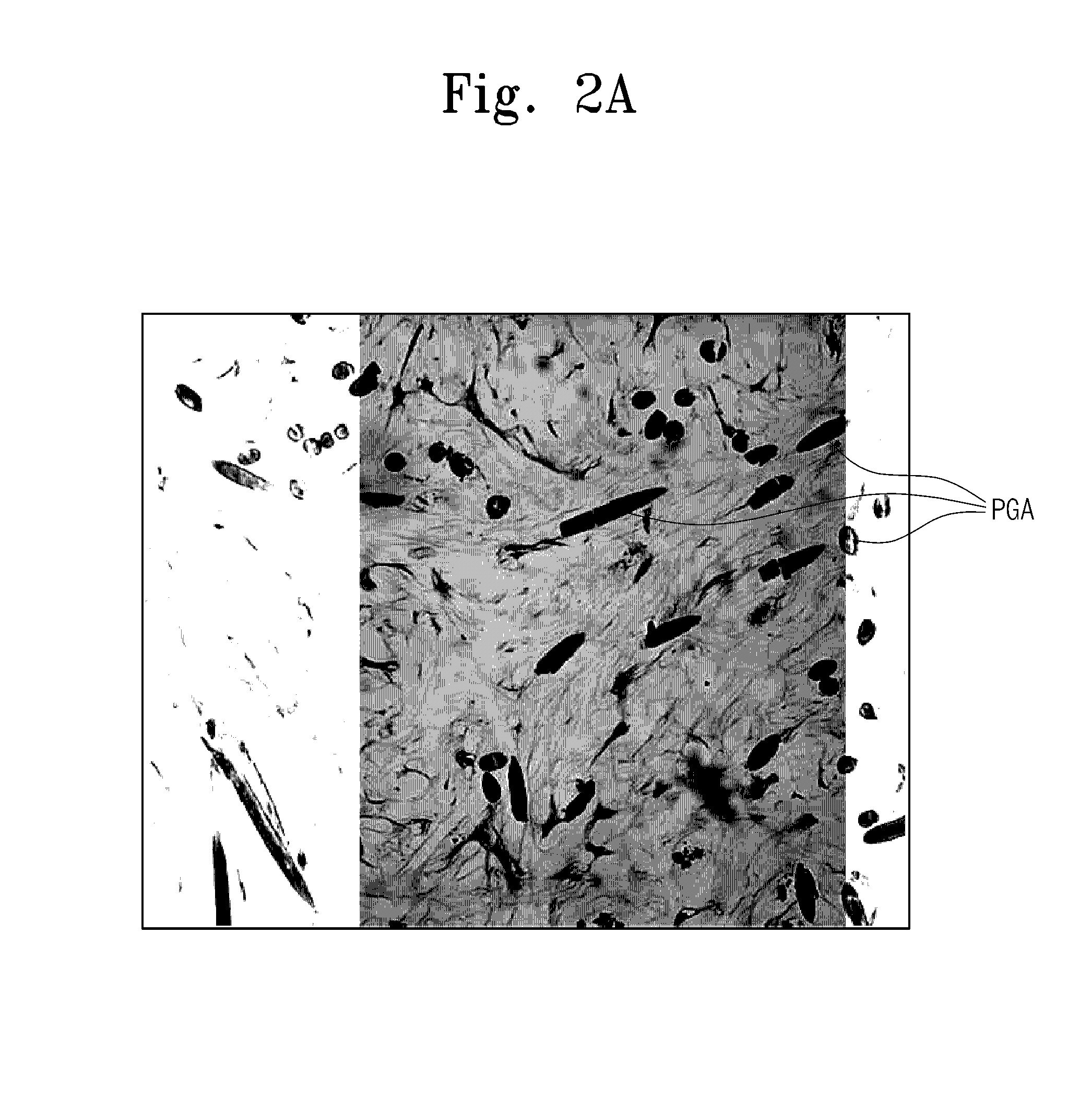Method of chondrogenic differentiation from mesenchymal stem cell, and composition comprising chondrogenic cell differentiated using the method to treat disease caused by cartilage damage
- Summary
- Abstract
- Description
- Claims
- Application Information
AI Technical Summary
Benefits of technology
Problems solved by technology
Method used
Image
Examples
experimental example 1
Monolayer Culture
[0037]Human mesenchymal stem cells were purchased from LONZA (USA). The mesenchymal stem cells were attached to the bottom of a culture dish and a mesenchymal stem cell growth medium MSCGM bullet kit (LONZA, USA) was added to conduct a monolayer-culture. The culture dish was incubated in a 5% CO2 incubator at 37. The medium was exchanged once every three days, and the number of cells suitable for a three-dimensional culture was secured through a subculture performed once every week.
experimental example 2
Three-Dimensional Culture
[0038]The mesenchymal stem cells incubated in Experimental Example 1 were treated with 0.05% trypsin-EDTA (ethylenediaminetetraacetate) and detached from the culture dish.
[0039]One group of the mesenchymal stem cells was suspended in a 2% alginate solution at a concentration of about 2×106 cells / d, and cell / alginate suspensions were slowly dropped into a 102 mM CaCl2 solution and left still for 10 minutes to form spherical beads.
[0040]Another group of the mesenchymal stem cells, that was detached by the method for inoculation of the mesenchymal stem cells into PGA scaffolds, was incubated in a CO2 incubator at a concentration of about 5×106 cells / ml for about 4 hours and directly injected into the PGA scaffolds.
[0041]Each of the three-dimensional structures thus manufactured was placed in a chondrogenic differentiation medium [high glucose DMEM (hyclone, USA), ITS (ITS LIQUID MEDIA SUPPLEMENT) (Sigma, USA), 50 μg / ml ascorbic acid 2-phosphate, 100 mM dexamet...
experimental example 3-1
Group Subjected to Centrifugal Force
[0042]Chondrogenic differentiation was induced by applying centrifugal force to some of the alginate beads and the PGA scaffolds including the mesenchymal stem cells in Experimental Example 2. Centrifugal force of about 100×G-force was applied to the mesenchymal stem cells in the group subjected to centrifugal force once every day for 2 weeks and the incubation was performed by exchanging the medium in a CO2 incubator at 37° C. once every three days.
PUM
 Login to View More
Login to View More Abstract
Description
Claims
Application Information
 Login to View More
Login to View More - R&D
- Intellectual Property
- Life Sciences
- Materials
- Tech Scout
- Unparalleled Data Quality
- Higher Quality Content
- 60% Fewer Hallucinations
Browse by: Latest US Patents, China's latest patents, Technical Efficacy Thesaurus, Application Domain, Technology Topic, Popular Technical Reports.
© 2025 PatSnap. All rights reserved.Legal|Privacy policy|Modern Slavery Act Transparency Statement|Sitemap|About US| Contact US: help@patsnap.com



